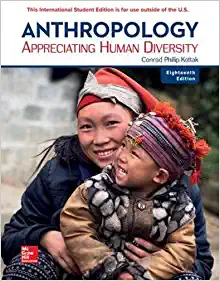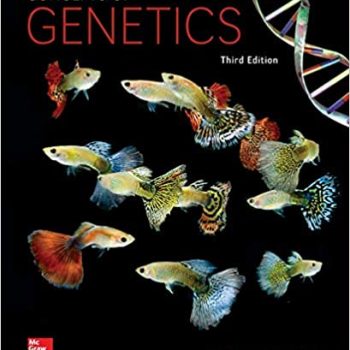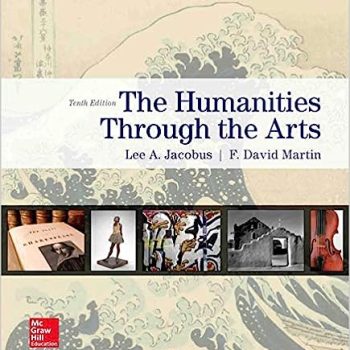Test Bank For Anthropology Appreciating Human Diversity 18th Edition By Conrad Kottak
ISBN-13: 978-1260052404, ISBN-10: 1260052400
Chapter 1 What is Anthropology?
1) What is anthropology?
- A) the art of ethnography
- B) the study of long-term physiological adaptation
- C) the study of the stages of social evolution
- D) the humanistic investigation of myths in nonindustrial societies
- E) the study of humans around the world and through time
2) A holistic and comparative perspective
- A) makes general anthropology superior to sociocultural anthropology.
- B) refers only to the cultural aspects of human diversity that anthropologists study.
- C) makes anthropology an interesting field of study, but too broad of one to apply to real problems people face today.
- D) most characterizes anthropology when compared to other disciplines that study humans.
- E) is the hallmark of all social sciences, not just anthropology.
3) As humans organize their lives and adapt to different environments, our abilities to learn, think symbolically, use language, and employ tools and other products
- A) rest on certain features of human biology that make culture itself a biological phenomenon.
- B) have made some human groups more cultured than others.
- C) prove that only fully developed adults have the capacity for culture; children lack the capacity for culture until they mature.
- D) rest on certain features of human biology that make culture, which is not itself biological, possible.
- E) are shared with other animals capable of organized group life—such as baboons, wolves, and even ants.
4) Which of the following statements about culture is FALSE?
- A) Culture is a key aspect of human adaptability and success.
- B) Culture is passed on genetically to future generations.
- C) Cultural forces consistently mold and shape human biology and behavior.
- D) Culture guides the beliefs and behavior of the people exposed to it.
- E) Culture is passed on from generation to generation.
5) What is the process by which children learn a particular cultural tradition?
- A) acculturation
- B) ethnology
- C) enculturation
- D) ethnography
- E) biological adaptation
6) This chapter’s description of how humans cope with low oxygen pressure in high altitudes illustrates
- A) human capacities for cultural and biological adaptation, the latter involving both genetic and physiological adaptations.
- B) how biological adaptations are effective only when they are genetic.
- C) how human plasticity has decreased ever since we embraced a sedentary lifestyle some 10,000 years ago.
- D) how in matters of life or death, biology is ultimately more important than culture.
- E) the need for anthropologists to pay more attention to human adaptation in extreme environments.
7) The presence of more efficient respiratory systems to extract oxygen from the air among human populations living at high elevations is an example of which form of adaptation?
- A) short-term physiological adaptation
- B) cultural adaptation
- C) symbolic adaptation
- D) genetic adaptation
- E) long-term physiological adaptation









Reviews
There are no reviews yet.